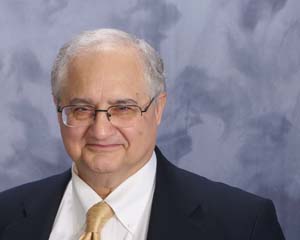Design of Instruction in Higher Education: A Short Overview
Farhad Saba, Ph. D.
Founder and Editor, Distance-Educator.com
In this series of articles, I presented a hierarchical model of distance education consisting of seven interrelated nested systems levels. These systems have been present in most distance education organizations that I observed, or planned and built over the past 30 years. In the previous weeks, I discussed Hardware, Software, Telecommunications, Instructional, Educational, Societal and Global Systems Levels. Last week I started to explain the process of system modeling so that you could start the planning process for your organization. I hope that conducting the environmental scan as presented in a previous article has given you a better appreciation of the components of the technology-based educational programs in your organization and the interrelationships among such components. But before I went any further on the process of modeling itself, I explained certain important concepts in system methodology in this article and showed how these principles can be applied in this article titled Planning and Managing Distance Education Systems: Applying system dynamics. In a subsequent article, I presented a step-by-step application of system dynamics for model building and described how these steps can be implemented in your institution. Also in an article titled Institutional Realities, I explained the inverse relationship between complexity and the process of planning. In more complex institutions, it is difficult to agree on a set of common goals among students, faculty, administrators, taxpayers, and decision makers. To make such agreements more feasible, I also described the roles of the members of the team that is responsible for the modeling modeling process. In the article to follow starting this week, we will focus on Instructional Systems Level and describe how system modeling at this level impacts the process of planning for the entire institution as instruction is a core function of institutions of higher education as they are structured now.
So far I have shown that system dynamics modeling of distance education organizations could be generalized to model educational organizations as small as an academic department or as large as an entire state system of higher education. In this article, we will begin to focus on the Instructional Systems Level; particularly the concept of instructional transaction. The primary purpose here is to demonstrate:
- How the theory of transactional distance as proposed in the field of distance education explains instructional transaction not only in distance education but also in face-to-face-education.
- The ramifications of the concept of transactional distance on management of educational organizations.
- How the authors used system dynamics to verify transactional distance as a key concept in distance education.
- How using system dynamics to verify key the concept of transactional distance could inform the design of instruction.
In describing instructional systems, I demonstrated that in higher education institutions faculty are primarily responsible for delivering their courses to their students in a lecture format. They are also tasked with evaluating the performance of each student throughout the course. Each of these tasks are labor intensive, particularly in courses that have several hundred students and multiple sections. Faculty are pre-modern crafts workers who repeat the same live lecture each time they present with as much consistency that this non-standard practice allows.
Because the work flow of the faculty have not moved to a standard industrial model, they do not enjoy the services of a professional course team consisted of instructional designers, course developers, programmers, media producers and evaluators. Therefore, it is virtually impossible for most of them to experiment with instructional models that are more complex than preparing and delivering a lecture. Thus, most courses do not truly have a design in the industrial or post-industrial sense of the word.
In the final analysis, it is not even how much students learn for which the institution as well as the faculty is compensated, but how long a student actually sits on a chair in a classroom!
 Course delivery also is pre-industrial in the sense that the same lecture is repeated live time after time in the same academic year, and year after year during the tenure of a faculty. The faculty crafts each lecture individually and presents it live over and over again with the hope that the core information in each lecture does not vary from classroom to classroom. Contrary to popular belief, this so called face-to-face mode of instruction particularly in courses that have more than 50 students, there is not much interaction with the instructor, or among learners as the instructor is engaged in one way presentation of information to students in most cases. Without a course team, design-based instructional strategies, such as, problem based learning or the use of simulations or serious games and other similar approaches that foster deep cognitive involvement, reflection, independent thinking and problem solving have remained in the periphery. Delivering a robust lecture to students is the de facto “design” of instruction as it has been for hundreds of years since the inception of universities. Learners are seen as empty buckets to which knowledge must pour, and if they are exposed to a good lecture, they are bound to learn. In the final analysis, it is not even how much students learn for which the institution as well as the faculty is compensated, but how long a student actually sits on a chair in a classroom!
Course delivery also is pre-industrial in the sense that the same lecture is repeated live time after time in the same academic year, and year after year during the tenure of a faculty. The faculty crafts each lecture individually and presents it live over and over again with the hope that the core information in each lecture does not vary from classroom to classroom. Contrary to popular belief, this so called face-to-face mode of instruction particularly in courses that have more than 50 students, there is not much interaction with the instructor, or among learners as the instructor is engaged in one way presentation of information to students in most cases. Without a course team, design-based instructional strategies, such as, problem based learning or the use of simulations or serious games and other similar approaches that foster deep cognitive involvement, reflection, independent thinking and problem solving have remained in the periphery. Delivering a robust lecture to students is the de facto “design” of instruction as it has been for hundreds of years since the inception of universities. Learners are seen as empty buckets to which knowledge must pour, and if they are exposed to a good lecture, they are bound to learn. In the final analysis, it is not even how much students learn for which the institution as well as the faculty is compensated, but how long a student actually sits on a chair in a classroom!
…lack of synchronicity between well-established instructional design models, and the way universities are administered keep new models of instruction at the margin…
Even if faculty experiment with alternative models of instruction, such as, individualized instruction, the administrative system of universities will not be able to accommodate the outcomes. University calendars are set for two enrollments per year for the overwhelming majority of students. And the administrative structure of the university is not capable to provide instructional services when learners are ready to move forward to new levels of learning. Students must adjust to what is offered in each semester, and not what they need to graduate. Even if a group of students master a certain level of academic achievement early in a semester, they have to wait until the new term arrives for moving forward. Such lack of synchronicity between well-established instructional design models, and the way universities are administered keep new models of instruction at the margin, as the main body of the university is ill prepared to accept them. Inevitably, this leads to increased time-to-degree, which is now between 5 to 6 years for a so-called four-year institution.








